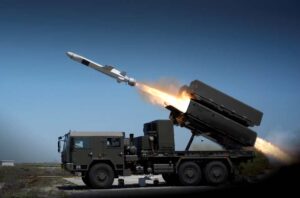The Polish Ministry of National Defense signed a contract on Tuesday with Norway’s Kongsberg worth $1.5 billion for four more Naval Strike Missile (NSM) Coastal Defense System (CDS) squadrons.
The company underscored this is the “largest single contract in the history of Kongsberg and is an important milestone in our more than 200 year long history. Poland has been a long-standing partner, and we are proud to sign this agreement,” Geir Håøy, president and CEO of Kongsberg, said in a statement.

Previously, Poland was the first country to acquire NSM CDS in 2008, followed by the procurement of an additional squadron in 2014. Kongsberg said deliveries for this latest contract will last from 2026 into the early 2030s.
The company did not disclose how many missiles are included in the four squadrons.
The NSM CDS is primarily aimed against sea targets from land bases, but it can also target land targets, primarily using military GPS. Kongsberg said land targets are generally stationary and “soft targets” like depot buildings, command and control facilities, sensor sites, air defense sites and ships secured alongside a jetty.
Kongsberg said Polish companies will participate in “significant parts of the scope” of this order, including the communication system, vehicles, the command and control system and part of the system integration activities.
The contract includes an agreement by Kongsberg to provide training and technical support allowing Polish personnel to conduct maintenance of the NSM CDS in Poland.
Kongsberg said the contract is still dependent on approval of export financing, which is expected to be finalized “within a few weeks.”
Previously, in May the U.S. State Department approved a potential $110 million Foreign Military Sale (FMS) of the NSM CDS to Latvia (Defense Daily, May 2).
Kongsberg has teamed with the U.S.-based RTX [RTX] to sell NSMs in the U.S. The American company now builds launchers for NSM domestically.
Last December, the Navy awarded RTX a $209 million FMS to provide the NSM CDS to Romania, which included two fire distribution centers, four mobile launch vehicles and an unspecified number of NSMs (Defense Daily, Jan. 6).